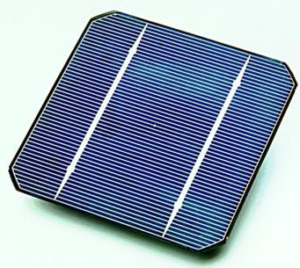An electronic mismatch in the pairs of materials used to make organic solar cells can enhance cell operation, KAUST researchers have shown. The surprise finding — made following a comprehensive reanalysis of state-of-the-art organic solar materials — should enable researchers to predict new organic formulations with strong solar cell performance.
 The light-capturing layer of organic solar cells is typically comprised of a two-component mixture called a donor–acceptor blend. In sunlight, the incoming energy can excite electrons to jump between different energy levels in the blend, suggesting that the energy level alignment between the donor and the acceptor component should be key to device performance. However, different research groups have used different methods to measure energy levels and have produced contradictory results on the effect of energy level alignment.
The light-capturing layer of organic solar cells is typically comprised of a two-component mixture called a donor–acceptor blend. In sunlight, the incoming energy can excite electrons to jump between different energy levels in the blend, suggesting that the energy level alignment between the donor and the acceptor component should be key to device performance. However, different research groups have used different methods to measure energy levels and have produced contradictory results on the effect of energy level alignment.
“We wanted to understand the origin of this contradictory understanding,” says Anirudh Sharma, a postdoc in Derya Baran’s lab, who led the work. “This motivated us to study the energy levels of organic solar cell materials using different methods to establish meaningful material–property relationships,” he says.
The team determined the energy levels of 33 organic solar materials using four different techniques. “Our findings show that the energy levels of organic semiconductors measured using photoelectron and low-energy inverse photoelectron spectroscopy closely correlate to the properties of solar cells,” says Jules Bertrandie, a Ph.D. student in Baran’s group. He notes that cyclic voltammetry, in contrast, gave misleading results in the context of solar cell energy levels.
After establishing the best methods for the measurement, the team analyzed energy level alignment in 12 donor–acceptor organic solar cell blends. The results showed — contrary to current belief — that blends with little to no difference in one energy level metric, known as the ionization energy, were poor performers. The best performing organic solar cells had a significant difference in ionization energy between the donor and the acceptor component in the blend.
“We were not surprised that our proposal for a new type of energy level measurement would be more reliable, but we were surprised that our hypothesis revealed that what is commonly believed in literature is actually not true,” Baran says. “This method has huge potential to reveal new donor–acceptor pair systems that could work well in organic solar cells and would also highlight which pairs won’t work,” she adds.
The significance of the result extends beyond solar research, Sharma notes. “The implications of this study are relevant for a larger field of organic electronics in general,” he says.
JOURNAL
Advanced Materials